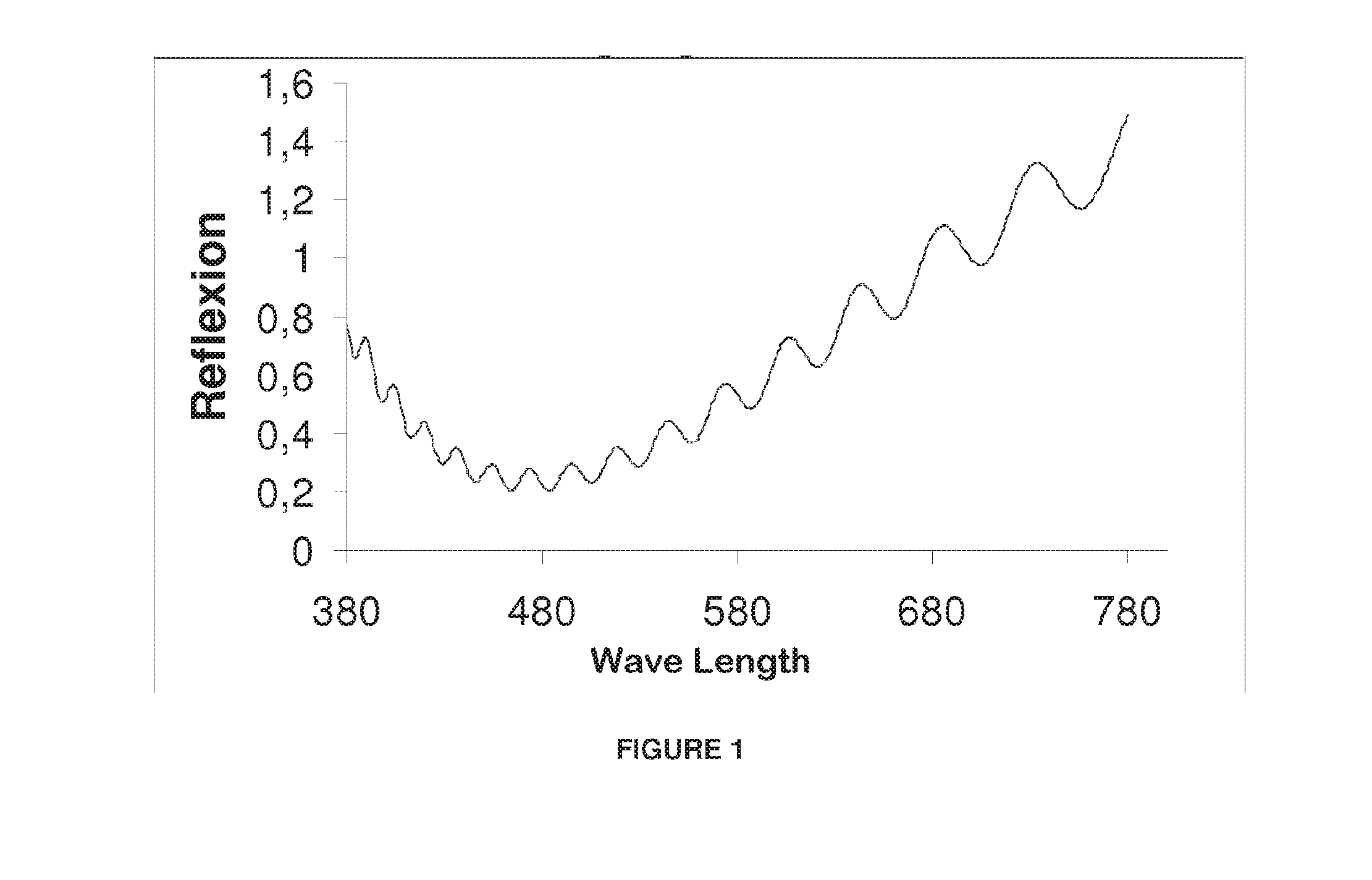Method for manufacturing a substrate coated with mesoporous antistatic film, and use thereof in ophthalmic optics
a technology of mesoporous antistatic film and ophthalmic optics, which is applied in the direction of printers, other chemical processes, camera focusing arrangements, etc., can solve the problems of conductive polymers being much more expensive than conductive metal oxides, optical items made from substantially insulating materials, and not giving fully satisfactory antistatic layers. , to achieve the effect of convenient adsorption
- Summary
- Abstract
- Description
- Claims
- Application Information
AI Technical Summary
Benefits of technology
Problems solved by technology
Method used
Image
Examples
example 1
TEOS / TMAC Matrix
[0162]The precursor sol was prepared by mixing together reagents and solvents in the following molar ratios: 1 TEOS:0.15 TMAC:22 EtOH:5.75 HCl (0.1M): 1.21 MeOH. The whole mixture was heated for 1 h at 60° C. to hydrolyze the silanes. After cooling, the pore-forming agent was added to the mixture in a molar ratio 1 TEOS:0.0851 Brij® 56. The composition was diluted in ethanol up to the final concentrations 1 TEOS:0.15 TMAC:1.21 MeOH: 52.4 EtOH:5.75 HCl (0.1M) and thereafter was set under stirring overnight prior to being deposited. It had a solid content of 5.13% by weight. The composition was then filtered through a syringe filter of 0.85 μm and diluted by a factor 2 (solid content˜2.78%) prior to being deposited through spin coating onto the substrate. Prior to undergo depositions, the substrate had been submitted to a surface preparation such as a corona treatment or a plasma treatment with oxygen to prevent any adhesion problem.
[0163]Thereafter, the film was submi...
example 2
TEOS / APTES Matrix
[0165]A silica sol was prepared by mixing together reagents and solvents in the following molar ratios: 1 TEOS (45.8 g): 3.8 EtOH (39 g): 5 HCl (0.1M) (19.9 g). The whole mixture was heated for 1 h at 60° C. to hydrolyze the silanes. After cooling, 50 g of this solution were collected and introduced into a container, and 34.7 g ethanol, 42 g water and 32 mL HCl 6M were then added thereto, under stirring. The resulting composition was stirred at room temperature for 5 minutes then cooled by placing the container in an ice bath. After approx. 15 minutes stirring, the temperature of the composition had reached 1-2° C.
[0166]15.665 g APTES were then added through a slow drop by drop, while controlling that the temperature of the mixture did not exceed 4° C., so as to limit the condensation rate of the sol and thus the formation of a precipitate. Once the addition APTES was complete, the stirring was continued for 5 min at 0-2° C., then for 15 min at room temperature. 8.9...
PUM
| Property | Measurement | Unit |
|---|---|---|
| refractive index | aaaaa | aaaaa |
| thickness | aaaaa | aaaaa |
| thickness | aaaaa | aaaaa |
Abstract
Description
Claims
Application Information
 Login to View More
Login to View More - R&D
- Intellectual Property
- Life Sciences
- Materials
- Tech Scout
- Unparalleled Data Quality
- Higher Quality Content
- 60% Fewer Hallucinations
Browse by: Latest US Patents, China's latest patents, Technical Efficacy Thesaurus, Application Domain, Technology Topic, Popular Technical Reports.
© 2025 PatSnap. All rights reserved.Legal|Privacy policy|Modern Slavery Act Transparency Statement|Sitemap|About US| Contact US: help@patsnap.com



